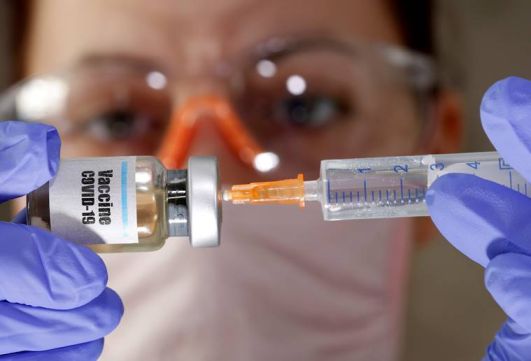Amid the Covid-19 pandemic, the world is desperately waiting for a vaccine to do away with all the chaos that it has created. While companies and researchers across the globe have been trying to develop it, one of the major challenges it faces is targeting the ‘spike proteins’ that covers the virus and the fact that people from different geographies react differently.
A team of researchers from MIT’s Computer Science and Artificial Intelligence Laboratory (CSAIL) have now taken a new approach where they used a combinational machine learning system that selects peptides (short strings of amino acids) that are predicted to provide high population coverage for a vaccine.
The design system called “OptiVax” introduces methods for designing new peptide vaccines, evaluating existing vaccines, and augmenting existing vaccine designs. In this system, peptides are scored through machine learning by their ability to be displayed to elicit an immune response and are then selected to maximise population coverage of who could benefit from the vaccine.
“We evaluated a common vaccine design based on the spike protein for Covid-19 that is currently in multiple clinical trials,” says Ge Liu and Brandon Carter, CSAIL PhD student and lead author on a new paper about OptiVax. “Based on our analysis, we developed an augmentation to improve its population coverage by adding peptides.”
What Did The Researchers Do?
As the researchers note, to create an effective vaccine, it is necessary to consider the Human Leukocyte Antigen (HLA) allelic frequency in the target population, as well as linkage disequilibrium between HLA genes to discover a set of peptides that is likely to be robustly displayed. Humans in different geographies have different frequencies of HLA alleles.
As the previous computational peptide vaccine design and evaluation do not utilise this difference, it gets difficult to accurately predict the coverage provided by a vaccine. However, recent advances in machine learning have produced models that can predict the presentation of peptides by hundreds of allelic variants.
They utilised human HLA haplotype frequencies of three major populations — White, Black, and Asian ancestry, to compute population coverage of these peptides for vaccine formulations. The researchers examined 4,690 geographically sampled Covid-19 genomes to exclude peptides with undesired mutation rates.
Taking into consideration the vast differences in individual human DNA, the researchers first adjusted their predictive models and used multiple models to design a vaccine. They paid close attention to the genetic makeup of different populations to maximise the likelihood that people with uncommon genes would still be covered by the vaccine.
This system called OptiVax works by identifying all the possible peptide fragments from a set of viral or tumour proteins that would be a good candidate for a vaccine. Then, peptides are scored for selection on multiple criteria, including their observed mutation rate across nearly 5,000 geographically sampled genomes. Because these peptide fragments stem from the virus, administering them in a vaccine can lead to immunity.
OptiVax is therefore efficient in designing a vaccine from these candidates to maximise population coverage in different geographical regions, promising a wider range of the population to become immune.
EvalVax, a complementary system designed by the team, predicts the coverage for vaccines, to evaluate 29 different vaccine designs by others. They found that many of them were not predicted to provide high population coverage.
One of the major challenges that researchers faced was to assemble good data on how people differ in their genetic makeup and key genes that control the response to a vaccine or viral infection. As David Gifford, MIT professor says, they had to solve a difficult optimisation problem to design a vaccine with good population coverage.
The team notes that their framework could be used to design vaccines for a wide range of infectious diseases, and hope to apply it to other viral infections in the future.
Wrapping Up
The researchers believe that once animal testing of the vaccine is done, it can be run in the clinical trials. As different individuals respond differently in Covid-19, it is a challenging task for them to crack the right vaccine, but with machine learning, they believe that they are close to achieving success. They are currently working with a team at the National Institute of Health (NIH) to see if their methods can be used for risk prediction using data from Covid-19 patients.
At present, the World Health Organisation lists 79 COVID-19 vaccine candidates in clinical or preclinical evaluation, and the precise designs of most of these vaccines are not public. The researchers, therefore, encourage the early publication of vaccine designs to enable collaboration and rapid progress towards safe and effective vaccines for Covid-19. They have in the research paper shared that all of their software and data that are freely available as open-source to allow other researchers to use and extend their methods.

























